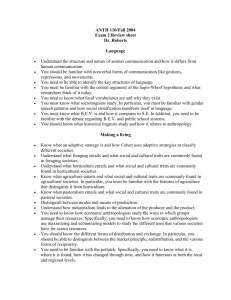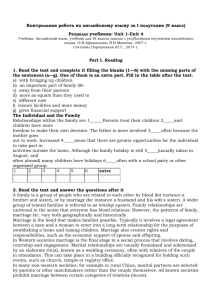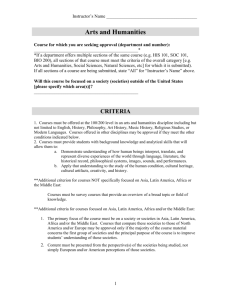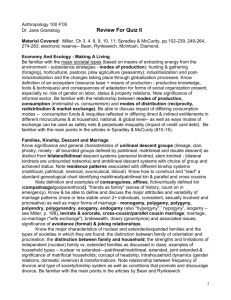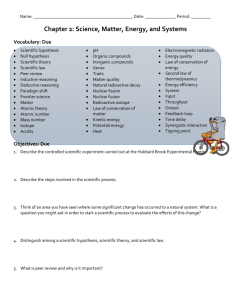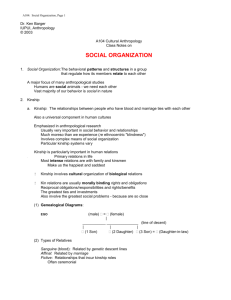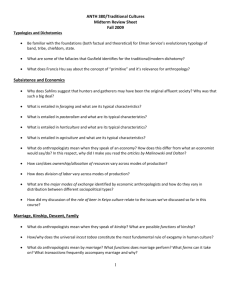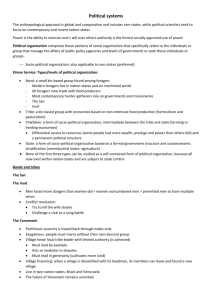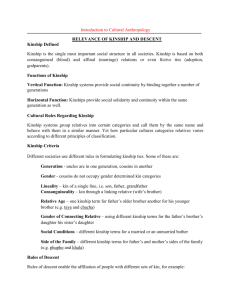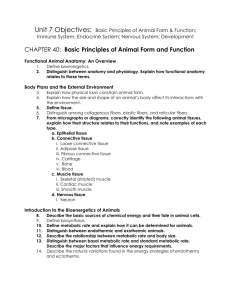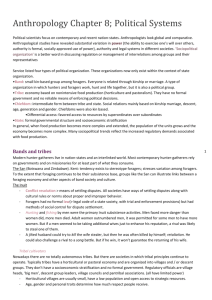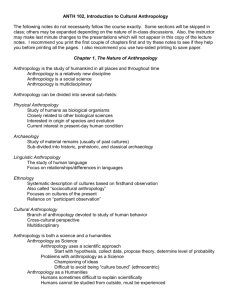ANTH 110/Spring 2011 Exam 2 Review Sheet Dr. Roberts
advertisement
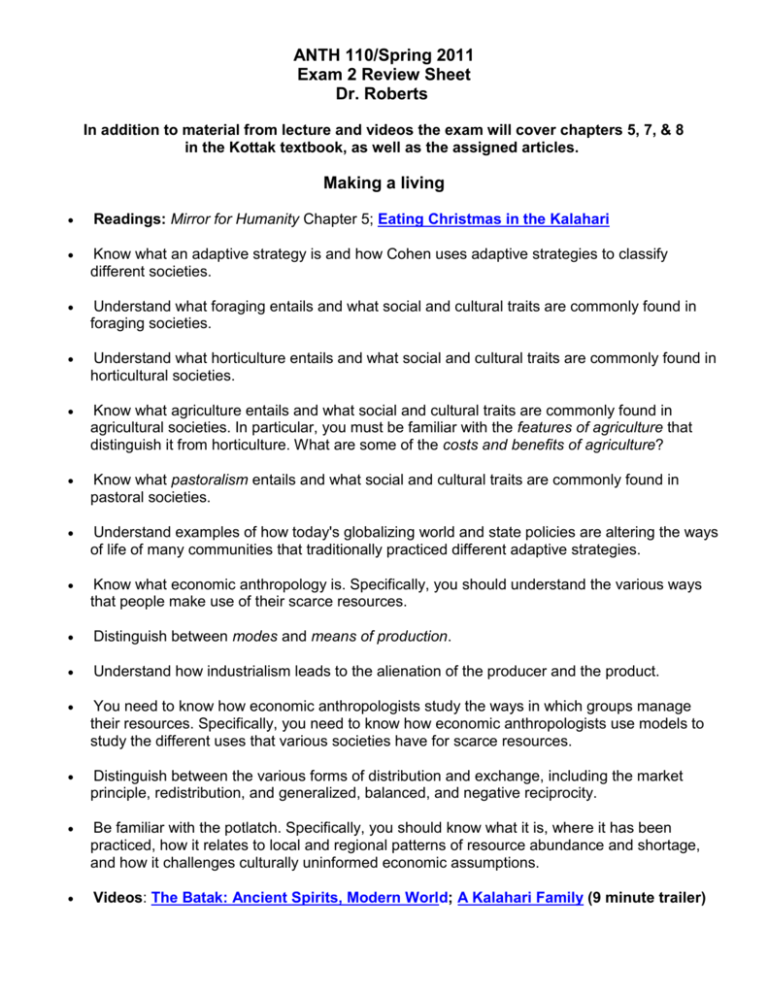
ANTH 110/Spring 2011 Exam 2 Review Sheet Dr. Roberts In addition to material from lecture and videos the exam will cover chapters 5, 7, & 8 in the Kottak textbook, as well as the assigned articles. Making a living Readings: Mirror for Humanity Chapter 5; Eating Christmas in the Kalahari Know what an adaptive strategy is and how Cohen uses adaptive strategies to classify different societies. Understand what foraging entails and what social and cultural traits are commonly found in foraging societies. Understand what horticulture entails and what social and cultural traits are commonly found in horticultural societies. Know what agriculture entails and what social and cultural traits are commonly found in agricultural societies. In particular, you must be familiar with the features of agriculture that distinguish it from horticulture. What are some of the costs and benefits of agriculture? Know what pastoralism entails and what social and cultural traits are commonly found in pastoral societies. Understand examples of how today's globalizing world and state policies are altering the ways of life of many communities that traditionally practiced different adaptive strategies. Know what economic anthropology is. Specifically, you should understand the various ways that people make use of their scarce resources. Distinguish between modes and means of production. Understand how industrialism leads to the alienation of the producer and the product. You need to know how economic anthropologists study the ways in which groups manage their resources. Specifically, you need to know how economic anthropologists use models to study the different uses that various societies have for scarce resources. Distinguish between the various forms of distribution and exchange, including the market principle, redistribution, and generalized, balanced, and negative reciprocity. Be familiar with the potlatch. Specifically, you should know what it is, where it has been practiced, how it relates to local and regional patterns of resource abundance and shortage, and how it challenges culturally uninformed economic assumptions. Videos: The Batak: Ancient Spirits, Modern World; A Kalahari Family (9 minute trailer) Families, kinship, and marriage Readings: Mirror for Humanity Chapter 7; When Brothers Share a Wife Understand what it means for much of kinship to be culturally constructed. Know the difference between nuclear and extended families. In addition, you should be able to distinguish between family of orientation and family of procreation. Be familiar with typical patterns of family organization among foragers. Understand how industrialism has affected family organization. In particular, you should be familiar with recent changes in North American kinship. Know what descent groups are, and be familiar with the different kinds of descent and postmarital residence rules. In addition, you should know the difference between clans and lineages. Be able to distinguish between incest, exogamy, and endogamy. Know the six things that marriage can, but does not always, accomplish. In addition, you should understand how these factors are relevant to the consideration of same-sex marriage. Understand how marriage functions as a form of group alliance, and the role that bridewealth and dowries play in creating and maintaining such alliances. In addition, you should be able to distinguish between sororate and levirate marriages. Know how divorce varies across cultures. In particular, you should be familiar with the factors that affect rates of divorce. Be able to distinguish between the different kinds of plural marriages and the conditions that favor each. Videos: Polygyny and polyandry video clips. Gender Mirror for Humanity Chapter 8; Society and Sex Roles Know the difference between sex and gender and why gender is a cultural construction. In addition, you need to know the difference between gender roles and gender stereotypes. Know the nature of gender relations among foragers. In particular, you should understand what the domestic-public dichotomy is and how it relates to gender stratification. Know the nature of gender relations among horticulturalists. In particular, you should know what conditions influence the degree of gender stratification present in a given society. You should also be familiar with the patrilineal-patrilocal complex. Know the nature of gender relations among agriculturalists. Understand the relationship between patriarchy and violence. Know how industrialism has affected gender roles. In particular, you should understand how and why poverty in industrialized states is becoming feminized. Think about why I showed the video clips on Wangari Maathai and Vanadana Shiva. Understand how sexuality and sexual norms vary both within and between societies. Understand what sexual orientation is and how attitudes toward different orientations vary cross-culturally. Videos: Maasai Women; Six Miles Deep (Six 2 minute trailers).
